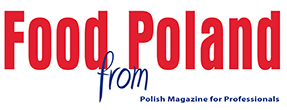Fig. 1. The share of agri-food products in Polish foreign trade (%)
Fig. 2. Foreign trade in Polish agri-food products (in EUR billion)
Geographic structure of exports of agri-food products
The year 2017 saw an increase in exports of agri-food products in most country groupings. However, the EU-15 countries have remained Poland’s most important trade partner in the trade exchange of agri-food products. Their share in Polish agri-food exports, compared with 2016, rose to 62.6%, i.e. by 2.3 pp (EUR 17.1 billion). The share of exports in the EU-13 countries dropped by 2.1 pp, i.e. to 18.9% (EUR 5.1 billion). On the other hand, the share of exports in CIS countries was maintained at a level from 2016, amounting to 4.8% (EUR 1.3 billion) – see Fig. 3.
For many years, the most important recipient of agri-food products from Poland has been Germany. In 2017, its share in Polish agri-food exports reached 23.7%, higher by 1.1 pp than the year before. The value of exports of these products rose to EUR 6.5 billion, i.e. by 18%. The largest receipts were achieved on the sales of: fish and fish preparations, including mainly smoked fish (15% of the value of Polish exports to Germany), tobacco products (7.2%), poultry meat and offal (7%), bakery and confectionery products, including biscuits and wafers (6.2%), as well as chocolate and chocolate products (4.5%) – see Fig. 4.
The second major outlet for Polish agri-food products in 2017, with an approx. 9% share in total Polish agri-food exports, was the United Kingdom where we sold agri-food products worth approx. EUR 2.4 billion (a growth by 12%). The main Polish goods purchased by the British included: meat preparations, including sausages, preserved meat, hams and other products (11% of export value), chocolate and chocolate products (11%), poultry meat and offal (10%), tobacco products (9%), as well as bakery and confectionery products (6.5%).
Outrunning the Czech Republic, the Netherlands shifted to the third position (a 6.2% share in Polish agri-food exports); receipts from sales in that direction in 2017 amounted to EUR 1.7 billion, higher by 24% than the year before. The commodity structure of exports to the Netherlands was dominated by: tobacco products (17.7% of the value of exports), poultry meat and offal (8.7%), beef (5.2%), chocolate products (5.1%), birds’ eggs in shell (4.4%), fruit juices (4.2%) and whey (3.8%).
The fourth largest recipient of Polish agri-food products in 2017 was Italy where exports grew by 14% to EUR 1.5 billion. The Italians mainly purchased the following from Poland: beef (19.4% of the value of exports), tobacco products (18.2%), pork (6.5%), pastry goods (4.8%), dried fish (4.6%), as well as cheese and curd (4.6%).
The next, fifth position (a drop from the third place in 2016) was occupied by the Czech Republic which reduced its purchases of agri-food products from Poland by 12% to EUR 1.4 billion in 2017. The main products exported to the Czech Republic included: poultry meat and offal (9.7%), tobacco products (9.6%), pastry goods (6.9%), cheese and curd (5.6%), pork (5.3%), food preparations (4.0%), rapeseed oil (3.5%), and chocolate products (3.4%).
The receipts from the export of agri-food products from Poland to non-EU countries in 2017 amounted to EUR 5.0 billion, higher by 12.4% than the year before. The highest increase was recorded in exports to the NAFTA countries (up by nearly 40%).
Fig. 3. The geographic structure of Polish exports in agri-food products in 2017*
Fig. 4. The main recipients of Polish agri-food products in 2017*
Commodity structure of exports of agri-food products
The commodity structure of Polish exports of agri-food products is dominated by products of plant origin. Their share in the value of agri-food exports in 2017 amounted to 53.9%, lower by 2.6 pp than the year before. The largest share in this commodity group comprised tobacco products (almost 11%), followed by sugar, confectionery and chocolate products (almost 9%), as well as cereals and cereal preparations (nearly 8%). The share of products of animal origin in Poland’s agri-food exports in 2017 grew to 39.2% (i.e. by 1.6 pp). The main item in the export structure of animal products remained meat and meat preparations (21% of the value of agri-food exports). Dairy products were also of great importance (7.6%) as well as fish and fish preparations (7.3%).
*preliminary data
1Data of the Central Statistical Office (GUS): https://stat.gov.pl/wskazniki-makroekonomiczne/ (accessed on 30 October 2017).
* preliminary data












